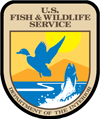Jump to a section:
National Wetlands Inventory | Conservation Planning | Environmental Contaminants | Endangered Species | Open / Close All
The Mountain-Prairie Region's Office of Ecological Services (ES) works to restore and protect healthy populations of fish, wildlife, and plants and the environments upon which they depend. Using the best available science, ES personnel work with Federal, State, Tribal, local, and non-profit stakeholders, as well as private land owners, to avoid, minimize, and mitigate threats to our Nation's natural resources. Among the many tools ES employs to achieve these goals is the administration of numerous laws, including the Endangered Species Act, Fish and Wildlife Coordination Act, National Environmental Policy Act, Clean Water Act, Federal Power Act, Migratory Bird Treaty Act, Bald and Golden Eagle Protection Act, and Sikes Act.
We also conduct oil spill and other environmental contaminant assessment and response activities, promote invasive species management and habitat restoration actions, conduct public outreach and education, and coordinate with other Federal agencies to ensure fish and wildlfe impacts are considered during the planning and construction of projects such as roads, dams, energy (oil and gas, wind and coal), and forest and rangeland management.
National Wetlands Inventory »
« Back to the top
The Service is the principal Federal agency tasked with informing the American public on the extent and status of the Nation's wetlands. To fulfill this responsibility, ES produces and distributes maps and other geospatial data on the location, type, and function of wetlands and deepwater habitats. These data support research, land management planning and analyses, policy development, and modeling activities for programs within and outside the Service.
Conservation Planning »
« Back to the top
Through project planning, ES seeks to provide biological expertise early in the process to assist other Federal agencies in the design and construction of projects to minimize adverse environmental impacts to fish, wildlife, and plants and their habitats. Through these efforts, ES attempts to protect rare and declining species and their habitats before actions such as Federal listings for endangered or threatened species become necessary. We also recommend mitigation measures and monitoring to employ Adaptive Management.
Environmental Contaminants »
« Back to the top

Biologist Andrea Gray collects eggs for contaminant analysis. Credit: USFWS
Environmental Contaminants (EC) Specialists have unique and specialized expertise and experience, including:
- Hazardous Spill Response
- Environmental Resoration
- Water Quality Criteria and Evaluation
- Using Pesticides and Pest Management Methods
- Conducting Contaminant Investigations
This expertise helps EC Specialists identify sources of environmental contamination, assess the impacts of contaminants to fish and wildlife resources, and help restore contaminated habitats. The EC Program's operations enhance all other Service activities, and EC Specialists regularly partner with other agencies and organizations to address their environmental contaminant concerns.
Endangered Species »
« Back to the top
As the principal Federal partner responsible for administering the Endangered Species Act (ESA), the Service takes the lead in conserving the Nation's imperiled species by fostering partnerships, employing scientific excellence, and developing a workforce of conservation leaders. Ecological Services carries out its responsibilities under the ESA through the following activities:
- Candidate Conservation
- Listing and Critical Habitat
- Recovery
- Consultations
- Grants
- Habitat Conservation Plans
- Tribal Cooperation













